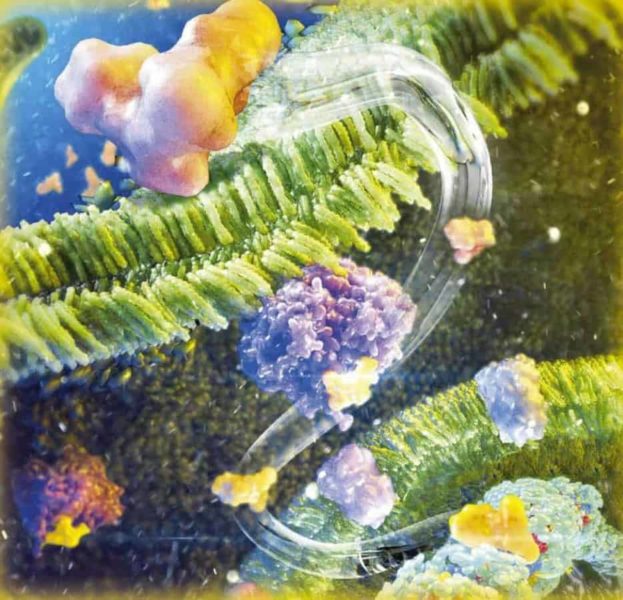Researchers, using novel large-scale imaging technology, have mapped the spatial location of individual genes in the nucleus of human cells and identified 50 cellular factors required for the proper three-dimensional (3D) positioning of genes. These spatial locations play important roles in gene expression, DNA repair, genome stability, and other cellular activities. The study, by scientists at the National Cancer Institute (NCI), part of the National Institutes of Health, appeared August 13, 2015, in Cell.
One of the fundamental properties of the genomes of higher organisms is the non-random arrangement of DNA in the cell nucleus. Researchers have long known that most genes occupy preferred 3D positions in the nucleus and that the location of genes matters for their function, but it has been difficult to determine the molecular players and mechanisms that determine the positions. Although genes can be visualized routinely and their positions determined using fluorescence in situ hybridization, or FISH, this mapping method has traditionally been limited to the analysis of a few samples at a time and cannot be used for large-scale genome mapping.
NCI researchers, in close collaboration with NCI’s High-Throughput Imaging Facility, which was established earlier this decade, have developed a method called HIPMap (High-throughput Imaging Position Mapping) that makes the large-scale determination of 3D gene positions possible. This method uses an optimized FISH detection protocol, fully automated microscopy, and combines it with sophisticated computational image analysis that delivers high-precision gene mapping information for thousands of samples in a single experiment.
In the study, NCI researchers, led by Tom Misteli, Ph.D., associate director, NCI Center for Cancer Research, used HIPMap and a method known as RNA interference (RNAi) knockdown to screen nearly 700 proteins in the nucleus to identify those that are involved in the 3D positioning of several human genes. RNAi knockdown uses RNA molecules to block the production of specific proteins in cells.
By collecting data continuously from automated microscopes for 27 days and then analyzing more than three million data points, the scientists were able to identify 50 cellular factors that determine the location of genes in the cell nucleus. This list provides the basis for further investigation of the molecular mechanisms of genome organization.
“The importance of HIPMap is that it is a starting point for numerous applications, including cancer biology,” said Misteli. “In addition to addressing basic questions about the mechanisms of how genomes are organized in intact cells, the ability to map gene positions in a large number of samples and cells has already been used to detect very rare chromosome translocation events in cancer and to ask what cellular factors determine where chromosomes break.” During translocations, chromosomes break and reattach, which can cause the fusion of otherwise unconnected genes, resulting in hybrid genes whose protein products may contribute to the development of cancer.
As an example of the implications of HIPMap, Misteli pointed to a study from his lab published last month (Burman et al., Genes and Development. July 1, 2015). In that study researchers used a method derived from HIPMap to probe mechanisms that contribute to the susceptibility of chromosomes to break and form a cancer-causing translocation between the NPM1 gene and the ALK gene in a cancer known as anaplastic large cell lymphoma. Another possible application of HIPMap is in cancer diagnostics. The researchers have previously shown that some genes assume distinct positions in cancer. As a result, the 3D positions of genes could be used as diagnostic markers in diseases such as breast cancer and prostate cancer.
“HIPMap will be a powerful tool in many ongoing efforts to map the genome in 3D space and to translate the findings from these studies to cancer biology,” Misteli concluded.


